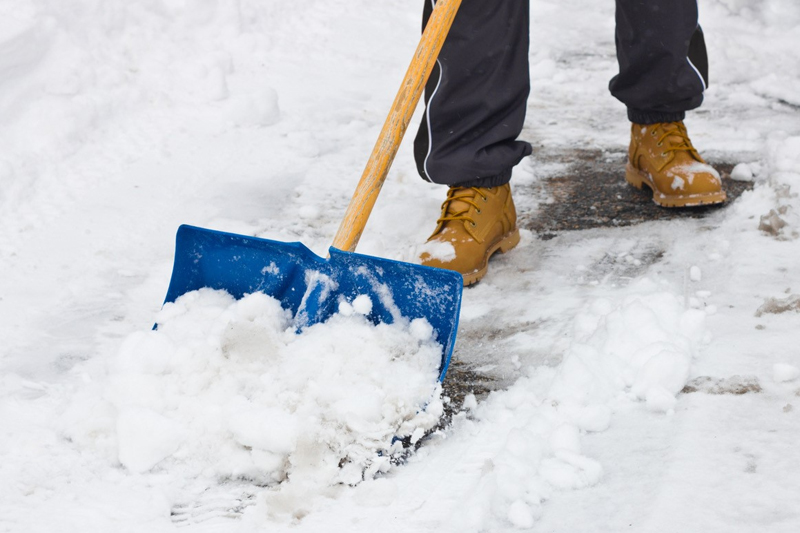
With extreme weather events on the increase, CHAS looks at the impact of cold weather on outdoor workers and discusses what can be done about it.
While it may appear that a warming climate is incompatible with harsher winters, extreme cold weather events do still occur. 2021 saw the lowest temperature recorded for the month of February since 1955, with the thermometer falling to as low as -23°C. However, it’s not just temperature that can lead to issues with cold. Wet and windy conditions all play their part in winter storms, and many counties saw their wettest winters on record in 2021. Being prepared for working in weather extremes is now more important than ever.
The law
When it comes to minimum or maximum working temperatures, there are no set laws. Therefore, the onus is on employers to look at managing the risk in other ways to protect worker health and safety in line with their legal responsibilities covered by The Health and Safety at Work Act 1974. The HSE suggests that companies will most likely be complying with the law if they are working in accordance with relevant British/European Standards.
What is cold stress?
In a nutshell, cold stress is a term used to encompass any condition caused by the body being unable to maintain core temperature after exposure to cold. These conditions may include hypothermia and frostbite, as well as issues such as chilblains and trench foot.
What are the symptoms to look out for?
The main symptoms to look out for with the onset of hypothermia range from fatigue and shivering, confusion to advanced signs such as skin discolouration, pupil dilation, and slowing pulse, which can lead to unconsciousness, coma and eventually fatality.
Frostbite, which affects the extremities, such as fingers, toes, ears, and nose, begins with pins and needles and, if left, can potentially affect not just the skin but muscles, tendons, nerves and bones.
According to Public Health England (PHE), exposure to cold temperatures can increase blood pressure and risk of clotting, suppress the immune system, narrow airways and diminish the capacity of the lungs to fight off infection. All of which can then lead to the risk of heart attack, stroke, respiratory disease, influenza and covid-19.
Immediate treatment
Hypothermia is a medical emergency, but immediate first-aid should include moving the affected person into a warm/room or place, removing any wet clothing and wrapping them in warm blankets. Frostbite may only require a GP, depending on severity. However, it remains essential not to rub any potentially frostbitten areas as this could cause further tissue damage.
Who is most at risk?
Cold stress can pose a greater risk to individuals with pre-existing conditions like diabetes, hypertension and cardiovascular disease. In addition, those who fall into an older demographic or may be pregnant, overweight or in poor physical condition could also be at greater risk.
Outdoor workers will regularly encounter wet and windy conditions as well as cold temperatures. Therefore, a wind chill factor or ‘feels like’ temperature can make the body feel much colder than the actual air temperature would suggest, especially in winter.
It’s not just outdoor workers
Of course, cold stress is not exclusive to outdoor working. Warehouses can be very poorly insulated, and workers in cold stores or refrigerated areas will also be affected. In addition, the law for outdoor working is different to that of indoors, where the guidelines are more defined.
How can the risk be managed?
The Management of Health and Safety at Work Regulations Act 1999 requires employers to conduct a risk assessment of the working conditions faced by their staff. See the HSE risk assessment guidelines for further information. Providing cold stress training helps workers to recognise the risks of working in colder environments.
PPE should be appropriate for the conditions. For example, winter footwear should be insulated and secure against the elements, particularly damp. Unlicensed headwear, such as a beanie worn beneath a properly fitted hard hat, could impair its safety abilities and potentially cause it to fail.
Employers should also provide mobile facilities for workers to take regular rest breaks and warm up with a hot drink. It should always be considered whether any work can be delayed and undertaken at a warmer time of year.
Conclusion
When it comes to managing the risk of cold stress, particularly in extreme weather conditions, preparedness is vital. While cold stress is just the start of more severe issues that could follow, it is preventable if employers and employees take the appropriate steps and follow the proper guidelines to protect themselves when working out in cold temperatures.
To find out more about how CHAS can help your business, call 0345 521 9111 or visit the website here








